Chinese High Fashion Designers, Philosophy and Sustainable Practice
- Oct 5, 2014
- 9 min read
Updated: Nov 27, 2024
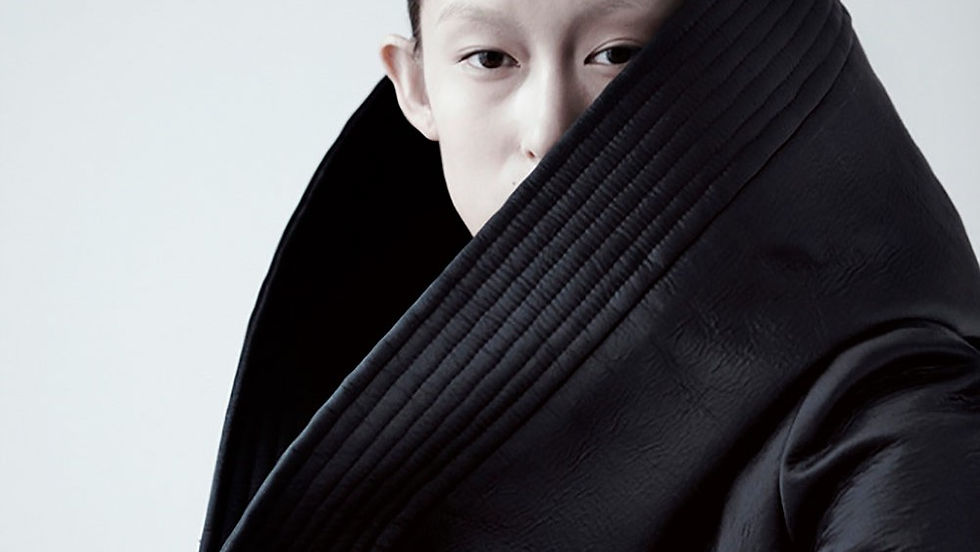
WHEN CHINESE FASHION DESIGNERS RULE THE WORLD: The philosophy and sustainable practice of Chinese high fashion designers, by Amanda Vallance
“When China Rules the World” is the provocative title of British journalist and scholar Martin Jacques’ 2009 book; when this happens, Jacques posits that Chinese society and culture will remain distinctive, rather than taking a western-style approach. (1) What, then, of when China rules the global fashion design industry? What approaches will Chinese high fashion designers take? Their voice and collective design influence will affect us all.
Image above: Design by Qiu Hao, from the QIUHAO 2011 FW “Serpens” Collection
Photographer: Matthieu Blein matthieubelin.com
ABOUT
It’s no secret that China’s fashion design industry is showing signs of developing a “Designed in China” reputation, in addition to its “Made in China” expertise. A second-generation of Chinese fashion designers with world-class design educations; a Chinese fashion designer—Ma Ke—being invited to the Paris Haute Couture Week in 2008; and the CFDA/Vogue Fashion Fund Exchange Program’s 2012 invitation to Chinese fashion designer Uma Wang to meet with Anna Wintour in New York, are all testimony. This development combined with the growing ranks of sophisticated and culturally attuned Chinese high fashion design customers, sees fashion production, design, and consumption all converging in one place.
Design by Qiu Hao, from the QIUHAO 2011 FW “Serpens” Collection Photographer: Matthieu Blein matthieubelin.com
China is moving toward the center of the world’s fashion design stage. The great, and critical, unknown is whether China will behave in the same way that the United States has done, from what was—in many ways—a similar start point in the 1940s. Will the Chinese embrace fashion consumption to the frenzied degree of America’s fast fashion feasting? Will Chinese high fashion designers develop their businesses into behemoth, publicly traded, glamazonian brands, and front them starchitect-style? Will their fashion design presentation cycles blur with speed, with swift design obsolescence seemingly the primary objective? Will China only continue the industry’s industrialized and delocalized production norms?
These are some of the trends that have contributed to the sobering snapshot on NGO Redress’ website, highlighting the textile waste; natural resources depletion; and chemical pollution impacts of the global fashion design industry. And as well, to the cultural degradation and societal upheaval that can be linked to the industry, as depicted in Jia Zhangke’s poignant documentary film Useless (2007).
Will China only continue to amplify the problems of the global fashion industry?
Given China’s 1.3 billion plus strong population, the answer must be “no.” Business as usual combined with this potential new multiple is not sustainable.
The way forward is in the footsteps of the food industry’s slow food movement. Slow fashion values and practices such as a “less is more” philosophy; paying producers more for higher quality, longer-lasting garments; supporting local designers; and caring more intimately about a garment’s origin and path to purchase, will all add up to a better looking picture.
Soapboxing is not going to be effective enough though—this is the fashion industry, after all. What is most needed is engaging design inspiration and thought leadership from a point of authenticity; what is needed is the voice and work of thoughtful Chinese high fashion designers.
Ma Ke, Uma Wang, Qiu Hao, and Wang Yiyang are four such designers. In various ways, they approach their work mindfully, engendering the kind of sustainable view and practice that needs to proliferate in China.
MA KE
Ma Ke’s design practice has developed from founding the ready-to-wear brand EXCEPTION de Mixmind in 1996—known for its neutral color palette, natural fabrics, visual understatement, and intellectual-literary underpinning—to her Wuyong (Useless) haute couture artistic line, which she started ten years later.
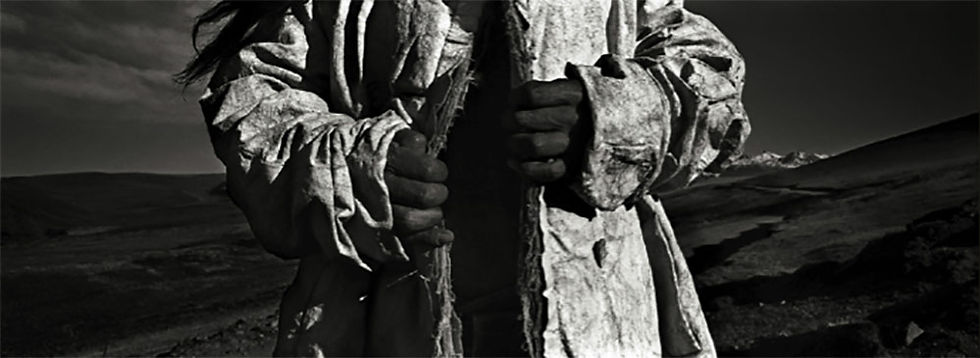

Design by Ma Ke, “The Earth” Collection, Wuyong (Useless), 2007 Photographer: Zhou Mi
Wuyong (Useless) is best described as a critical design practice. The resulting garments are exhibited in performance, museum, and gallery settings, as thought pieces to highlight issues of the environment, culture, and society that concern the designer.
Both in this practice and in her writing and interviews (wuyonguseless.com) the designer vocally rejects fast fashion and the ostentatious luxury inherent in the aesthetic and approach of many of the dominant global brands and designers. Wuyong (Useless) designs are produced by local artisans who are skilled in handcraft production methods, and offer a “simple luxury.” Ever new—in Ma Ke’s words, “visual wallop”—season-after-season, is replaced by design that advocates for a soulful, long-term connection between a garment and its wearer.
Her working philosophy is now extremely purist, but that can be put in context by the fact that she has grown up in a country, and during a time, in which many of the fashion industry’s issues have fallen the hardest. She speaks as designer about a designer’s responsibilities, and explores this through live design practice in China. This makes her one of the most important leading figures in the global industry.
Design by Ma Ke, from the Wuyong (Useless) 2007 “The Earth” Collection, exhibited at “Fashion in Motion” curated by V&A Museum, London, May 16, 2008
Video courtesy of V & A Museum
UMA WANG
A thread of a shared aesthetic is observable from Ma Ke’s work to that of Uma Wang, who also tends to design using neutral colors, simple-flowing silhouettes, and natural fabrics for her ready-to-wear Uma Wang line, which she started in 2005. The resulting garments have a timeless quality; they are a means to succeed years of trends.
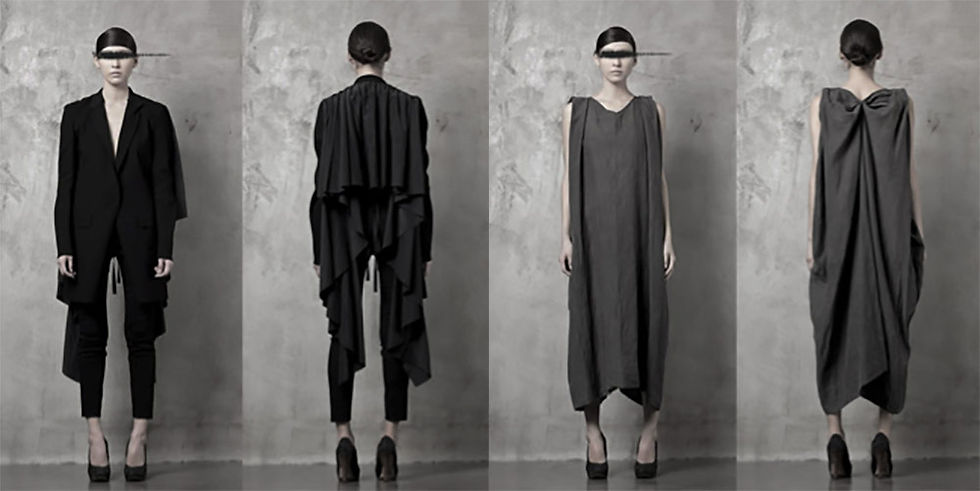
Design by Uma Wang, from the Uma Wang SS 2012 Collection
Photographer: Todd Anthony Tyler; Image: umawang.com
Timothy Parent, founder of the China Fashion Collective and a long-term associate of Uma Wang’s, has said that—despite the recognition she received from the CFDA/Vogue Fashion Fund; her international sales; and the strong following she garners in the international fashion press—the designer does not currently have ambitions for a large-scale, American-style fashion business. Her primary concern is to continue design beautiful and wearable garments.

Design by Uma Wang from the Uma Wang SS 2014 Milan Collection Image: umawang.com
As it is for Ma Ke, simplicity is important in Uma Wang’s aesthetic, but she executes it in a different way, by deploying “flow.” Timothy Parent sees parallels between her work and Daoism: “The philosophy of Daoism in ancient China was about having ‘no shape’—instead everything goes from the body and moves freely; likewise the dress flows while the body moves.” (2)
The designer explains further in an interview she gave to Cherie Paris at Paris Fashion Week in 2012:
“I always emphasize the feeling of space between body and clothes. The feeling of space means the body should not be constrained by clothing. There is a relation between body and clothes, especially when walking; the shape of the body comes out from the clothes vaguely. That’s the state of beauty I am looking for, which [is] very Chinese.” (3)
This “flow” and the more subtle bodily beauty showcase can be seen in action in Uma Wang’s Spring Summer 2014 Milan show HD by Fashion Channel…
QIU HAO

Design by Qiu Hao, from the QIUHAO 2011 FW “Serpens” Collection Photographer: Matthieu Blein matthieubelin.com
Qiu Hao shares Uma Wang’s slow-grow business outlook as well as her intensity of focus on actual design practice. He started his respected QIUHAO ready-to-wear line in 2008, and when asked which international fashion business he would like to match in the future, he explains that he is comfortable continuing with his own sustainable, creative path:
“I think everything happens naturally. It’s not what you’re thinking hard about making happen that comes true. I can only control things by doing my design and doing my production—that’s what I focus on. For the brand it’s like having a baby, and you cannot put some magic steroids in, or one day it will become a monster. I will give you my answer after twenty years.” (4)
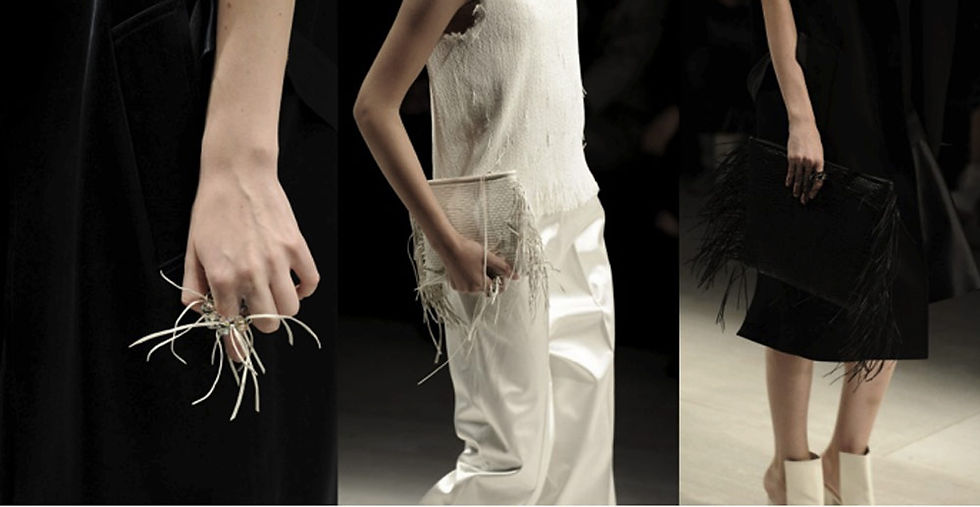
Design by Qiu Hao, from the QIUHAO SS 2014 Collection Image courtesy of the designer: qiuhaoqiuhao.com
Like Ma Ke, Qiu Hao works intimately with local producers. By the time the fringed leather skirt from his SS 2014 Collection was swinging along the Shanghai streets, it had circulated five local textile and garment manufacturing factories.
One production house in particular—with technically skilled workers and specialist equipment that can produce high-spec garments like this—usually caters exclusively to large-volume order, global high fashion brands such as Céline, Nina Ricci, Balenciaga, and Alexander Wang. QIUHAO is currently the only Chinese fashion design brand that they will do work for.

Design by Qiu Hao, from the QIUHAO SS 2014 Collection Image courtesy of the designer: qiuhaoqiuhao.com
Qiu Hao squeezes in small orders with the production house by developing design-partner type relationships, and sharing in the creative and innovation process with the garment manufacturers. He invites people from the production house to his fashion shows, to show them how the innovative requests he makes materialize. He feels this has been helpful in overcoming the skepticism he used to encounter when he asked for things that had not been tried before or copied from Western brands.
In “The Beautiful Generation: Asian Americans and the Cultural Economy of Fashion,” social and cultural Professor Thuy Linh Nguyen wrote about similar activity in New York in the 1990s and early 2000s. (5) She observed that Asian-American designers there had, for various reasons, formed intimacies that challenged “the fashion industry’s logic of distance … [a logic that] seeks to delink fashion design from garment manufacturing and to render the two as distinct practices.” (6)
Likewise, the closer proximity and intimacy that Qiu Hao has with his production houses, contributes to a local—and mutual—up-skilling. Hopefully this might also work to enrich the life experience of the local workers, as well as society there.
READ MORE ABOUT Qui Hao's high fashion minimalist designs
WANG YIYANG
The simplicity that runs through Ma Ke and Uma Wang’s work is also inherent in Wang Yiyang’s Cha Gang boutique ready-to-wear menswear line, which he started in 2004, alongside his larger-scale, street-wear focused ZUCZUG brand.
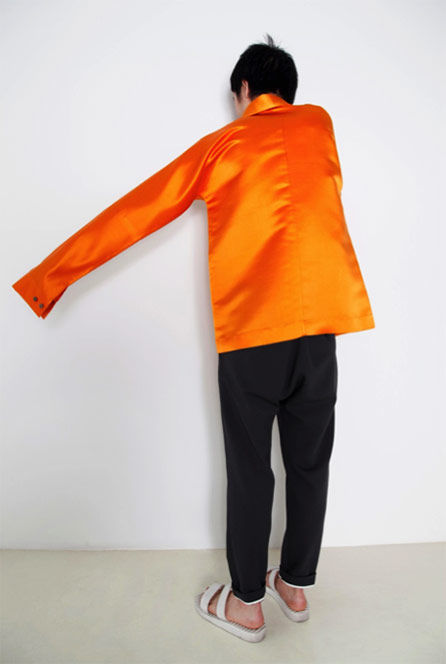
Design by Wang Yiyang from the Cha Gang line, circa 2011-2013 Image courtesy of the designer
The designer is interested in what is often referred to by Chinese designers as a “2D-flat aesthetic.” This means that the clothes are cut flat, with minimal use of Western-generated tailoring techniques like darting and seaming—applications that usually give a garment a sculptured, three-dimensional shape. This is in accord with Chinese tailoring tradition, when a garment was cut from one piece of fabric—without being shaped on a mannequin—with holes cut for the head and arms. It is the one design trait and aesthetic that most Chinese high fashion designers agree is quintessentially Chinese.
It’s an approach that offers contemporary Chinese an important tie to China’s rich sartorial history and culture. And—as Wang Yiyang sees it—the 2D-flat aesthetic is also highly relevant in our contemporary flat-screen saturated environment.
ON SIMPLICITY
To a Western eye and mind, the designers’ 2D-flat or flowing-line garments may appear too simple perhaps? Not highly aesthetically innovative? However, as French Sinologist François Jullien explains in his book “In Praise of Blandness: Proceeding from Chinese Thought and Aesthetics,” “blandness” is a positive quality in Chinese aesthetic tradition. (7) It is a state of extreme simplicity, which is not simple at all, because it encompasses everything in an elegantly absorbing way. “It is precisely in the bland that the arts of China reveal to us through their uncluttered sparseness and allusive depths.” (8)

“Six Gentlemen,” by Ni Zan, 1345, Yuan Dynasty, Collection of the Shanghai Museum Image source: commons.wikimedia.org
The author refers to a typical traditional Chinese painting by Ni Zan, whose work evolved towards greater simplicity and sparseness over the course of his artistic career: “Nothing strives to incite or seduce; nothing aims to fix the gaze or compel the attention. Yet this landscape exists fully as a landscape.” (9)
This is a vital inspiration for contemporary high fashion designers. Because of the current expectation that they always invent; always be provocative; always present something new and fabulous, we have a global fashion system that is, simply put, producing way too much. Do the practices of these Chinese high fashion designers offer perfect models of end-to-end sustainability? No, of course not. The important point is that they have some inspiring behaviors and philosophies right when and where this is needed most.
As Chinese high fashion design customers are reported to be looking beyond the powerhouse Western fashion brands, toward more individual, niche designers, whose work fits with contemporary Chinese culture, they will look to these designers, and their kindred spirits. May the designers’ good work develop a strong voice, with a positive echo throughout the fashion industry.
____________________
Story credits:
1. Martin Jacques, “When China Rules the World” (Penguin, 2009).
2. Timothy Parent, Informal Interview with the Author, Shanghai, January 10, 2014.
3. Cherie Paris, Uma Wang Interview In Paris Fashion Week, April 23, 2012.
4. Qiu Hao, Informal Interview with the Author, Shanghai, January 22, 2014.
5. Thuy Linh Nguyen, “The Beautiful Generation: Asian Americans and the Cultural Economy of Fashion” (Duke University Press, 2010).
6. Ibid, page 9.
7. François Jullien, trans. Paula M. Varsano, “In Praise of Blandness: Proceeding from Chinese Thought and Aesthetics,” (New York: Zone Books, 2004).
8. Ibid, page 36.
9. Ibid.
AUTHOR

Singapore-based design management professional Amanda Vallance writes about design, architecture and fine art. While living in Shanghai during 2013 – 2014 she investigated the design practice of some of China’s most respected high fashion designers vis-à-vis the social, cultural and environmental sustainability issues of the global fashion industry. Amanda received a Master of Fine Arts in Design Criticism from the School of Visual Arts New York (SVA).



